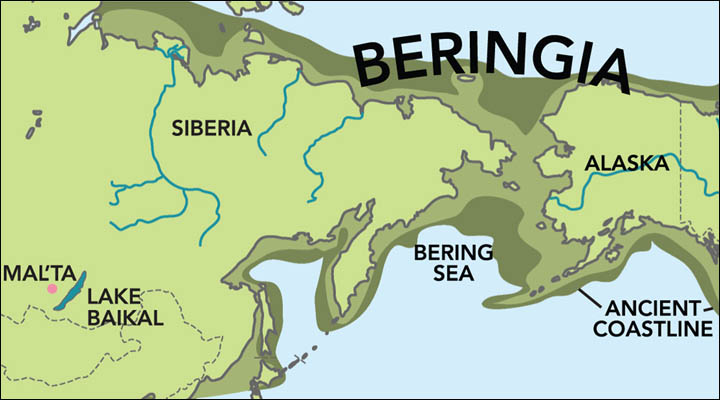Both DNA evidence and linguistic evidence tells us that the Americas were populated in "waves" that were separated by thousands of years. The last pre-Columbian wave was the Inuit's. As specialists in Arctic life, the Inuit came to occupy much of Alaska, Canada above the tree line, and even Greenland over the last thousand years.
 |
| Eskimo-Aleut Languages |
South of the Inuit lands is a huge stretch of North America populated by speakers of the Na-Dené languages, and another outcrop of Na-Dené in the American Southwest. The former includes Tlinkit and Cree; the latter, Navajo and Apache. The family also has a few members on the West Coast.
 |
| Dene Languages Map |
In fact, there may just be. A linguist named Edward Vajda has spent ten years doing the detailed, exacting work necessary to convince skeptical colleagues that Na-Dené languages and Yeniseian languages, an obscure set of extinct or threatened Asian languages, belong together in a Dene-Yenisian language family. On the whole, he seems to have convinced many, as his claim is based on every hallmark of the linguists trade: connections in morphology, vocabulary, reconstructed sound changes, and a reconstructed ancestor to both Proto-Na-Dene and Proto-Yeniseian.
 |
| Dene-Yeniseian Languages Map |
He was also able to support the link between the Asian and North American groups with some DNA evidence. The Wikipedia page on the language group says,
In his 2012 presentation Vajda also addressed non-linguistic evidence, including analyses of Y-chromosome and mitochondrial DNA haplogroups, which are passed unchanged down the male and female lines, respectively, except for mutations. His most compelling DNA evidence is the Q1 Y-chromosomal haplogroup subclade, which he notes arose c. 15,000 years ago and is found in nearly all Native Americans and nearly all of the Yeniseian Ket people (90%), but almost nowhere else in Eurasia except for the Selkup people (65%), who have intermarried with the Ket people for centuries. Using this and other evidence, he proposes a Proto-Dené-Yeniseian homeland located in eastern Siberia around the Amur and Aldan Rivers.However, the story is not quite so simple as it seems. A recent article in the New York Times suggests that the early speakers of this language group were long-term residents of Beringia, a land mass that connected Asia and Alaska. This land was a refugium during the last ice age: an environment of trees and grassland unlike the heavily iced north of Asia and North America.
 |
| Beringia During the Last Ice Age |
No comments:
Post a Comment